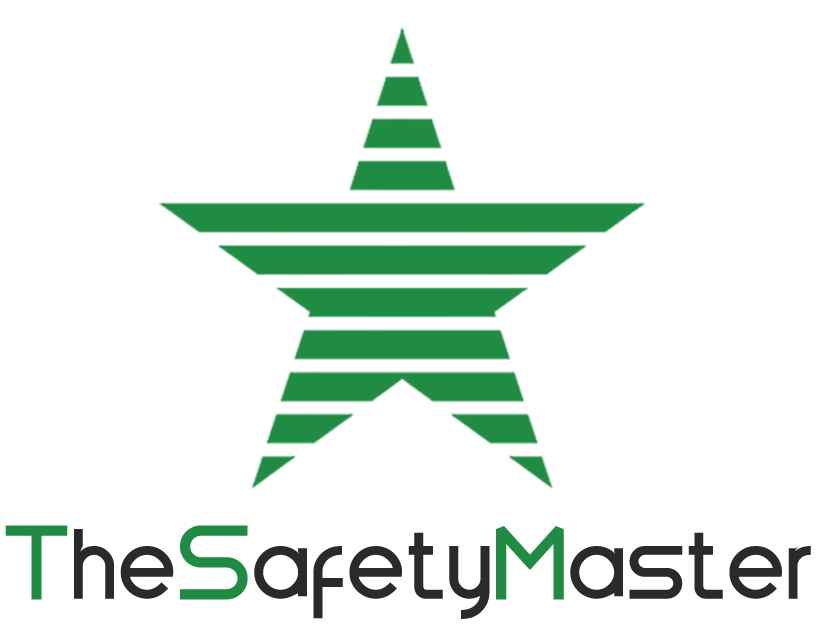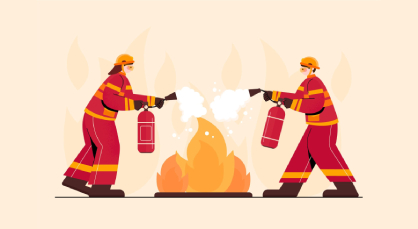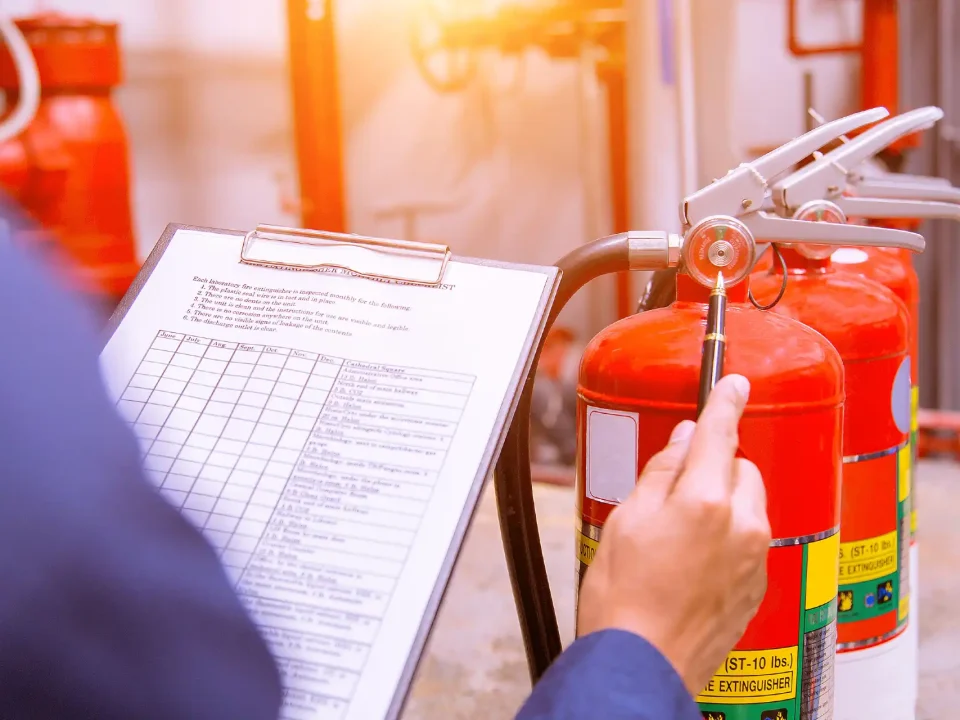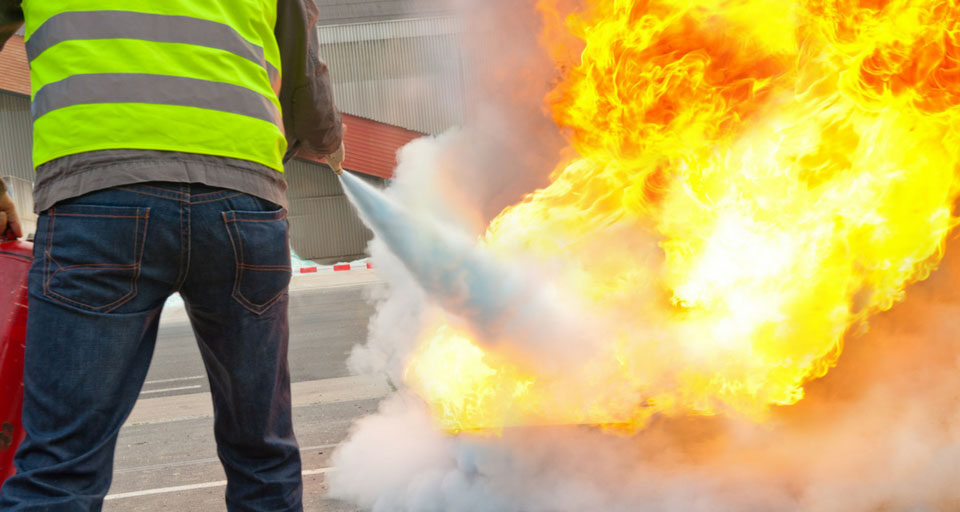Fire Safety Audit as per National Building Code 2016: A Complete Guide

Hazard Identification and Risk Assessment study report Consultancy and training services by TheSafetyMaster
May 19, 2025
How Do the Consultants Perform Fire Safety Audits in the Workplace?
May 20, 2025Fire safety is not just a regulatory requirement; it is a critical component of overall safety planning in residential, commercial, and industrial buildings. The National Building Code (NBC) 2016 of India lays down comprehensive guidelines to ensure fire prevention, protection, and life safety systems in buildings. A Fire Safety Audit based on NBC 2016 plays a pivotal role in identifying potential fire hazards, evaluating existing safety measures, and ensuring full compliance with legal standards.
What is a Fire Safety Audit?
A Fire Safety Audit is a systematic and independent assessment of a building’s fire protection systems and preparedness. The aim is to ensure that the design, operation, and maintenance of fire safety installations meet national standards, especially those outlined in NBC 2016. This audit helps in recognizing risks, minimizing hazards, and improving emergency response systems.
The audit includes evaluation of:
- Fire detection and alarm systems
- Emergency exits and evacuation plans
- Fire extinguishers, hydrants, and sprinklers
- Storage and handling of combustible materials
- Electrical fire safety precautions
- Training and fire drills for occupants
NBC 2016 provides specific guidelines in its Part 4, which focuses on “Fire and Life Safety.” It outlines provisions based on the occupancy type, building height, and area, ensuring that each structure has a tailored safety mechanism in place.
Why Fire Safety Audit is Crucial for Every Building
Neglecting fire safety can lead to catastrophic losses—both in human life and property. A Fire Safety Audit acts as a preventive tool that ensures fire safety systems are in place, functional, and compliant with national norms.
Key Benefits of a Fire Safety Audit:
- Ensures compliance with NBC 2016 and local fire department regulations
- Enhances awareness and preparedness of employees and residents
- Helps in identifying obsolete or faulty fire equipment
- Reduces risk of legal liabilities and insurance issues
- Assists in optimizing emergency response protocols
National Building Code 2016: Core Fire Safety Requirements
NBC 2016 has set detailed requirements for various types of occupancies such as residential, commercial, educational, industrial, and assembly buildings. Here are some of the vital aspects covered:
1. Fire Prevention
It emphasizes non-combustible building materials, proper electrical system design, and safe storage practices for flammable substances.
2. Life Safety
NBC 2016 requires clear escape routes, emergency lighting, fire exits, and fire-resistant doors to ensure safe evacuation during emergencies.
3. Fire Protection
Active fire protection systems such as sprinklers, hydrants, and smoke detectors must be installed and maintained regularly.
4. Building Design
The layout and architectural design should facilitate both fire suppression efforts and safe evacuation.
Fire Safety Audit vs. General Safety Audit
While a Fire Safety Audit focuses exclusively on fire-related hazards and compliance with NBC 2016, a broader Safety Audit encompasses overall workplace safety, including mechanical, electrical, chemical, and structural hazards. Conducting both ensures a holistic approach to workplace safety and regulatory adherence.
Who Should Conduct a Fire Safety Audit?
A certified Safety Consultant or a recognized safety auditing firm is typically appointed to conduct these audits. These professionals are well-versed with the provisions of NBC 2016 and bring years of domain expertise to identify gaps and recommend improvements. They assess both technical systems and human readiness to deal with fire emergencies.
Integration with Hazards and Risk Assessments
A Fire Safety Audit often forms part of a more comprehensive risk assessment strategy. For instance, it can be aligned with a Hazop Study (Hazard and Operability Study) in industrial setups. This ensures that potential process-related hazards are also accounted for while designing fire prevention and mitigation systems.
Role of Process Safety Management
In industries dealing with chemicals, gases, or volatile materials, fire risks are intricately linked with process safety. This is where Process Safety Management (PSM) becomes essential. PSM is a disciplined framework involving identification, understanding, and control of process hazards. Integrating fire safety audits with PSM protocols ensures that fire risks are addressed at both process and facility levels.
Fire Safety Audit Checklist as per NBC 2016
Here is a basic checklist aligned with NBC 2016 for conducting a thorough Fire Safety Audit:
- ✔ Availability and accessibility of fire exits
- ✔ Functionality of fire alarms and smoke detectors
- ✔ Proper signage and illumination for emergency exits
- ✔ Adequate fire extinguisher type and placement
- ✔ Inspection and maintenance records of fire systems
- ✔ Evacuation drills and training schedules
- ✔ Storage practices of flammable materials
- ✔ Electrical safety standards and grounding checks
- ✔ Access for fire tender and emergency response units
- ✔ Water supply for fire-fighting systems
Fire Safety in High-Rise and Special Occupancy Buildings
NBC 2016 places special emphasis on high-rise structures and buildings like hospitals, schools, and malls. These require:
- Pressurized stairwells
- Fire lifts for emergency use
- Smoke management systems
- Compartmentalization to restrict fire spread
- Integration with fire department alert systems
Regular fire audits in such buildings are critical due to the high occupancy and complex infrastructure.
The Safety Master: Your Partner in Compliance
When it comes to comprehensive fire and safety solutions, The Safety Master stands out as a trusted name. With extensive experience in conducting Fire Audits, HAZOP Studies, PSM implementation, and overall safety consultancy, they help businesses and institutions stay compliant and secure. Their expert team evaluates your current fire preparedness and provides a roadmap for improvement tailored to your building’s unique needs.
Final Thoughts
A Fire Safety Audit as per National Building Code 2016 is more than just a formality—it is a life-saving, risk-mitigating, and compliance-enforcing practice that should be prioritized by every building owner and facility manager. Whether you manage a commercial complex, industrial plant, or high-rise residential tower, fire audits are essential for safeguarding lives and assets.
By engaging expert services like The Safety Master, you not only ensure full compliance with NBC 2016 but also build a safer, more resilient future for all stakeholders.
Need help with fire safety compliance? Schedule your Fire Audit today with The Safety Master and stay ahead of hazards.



